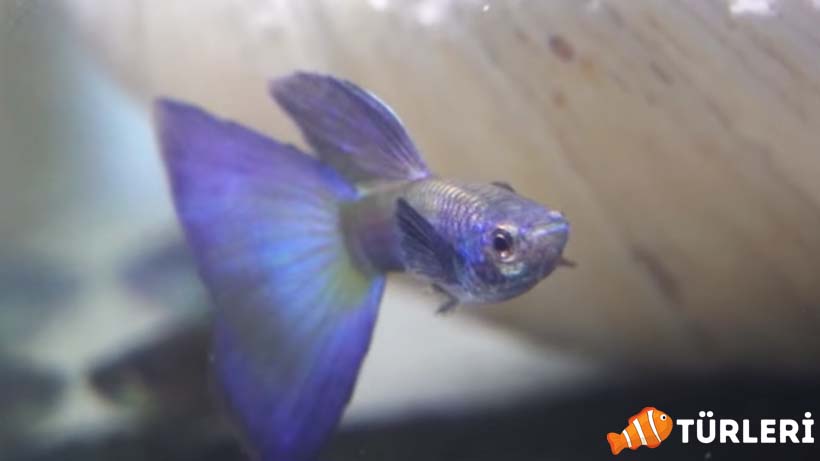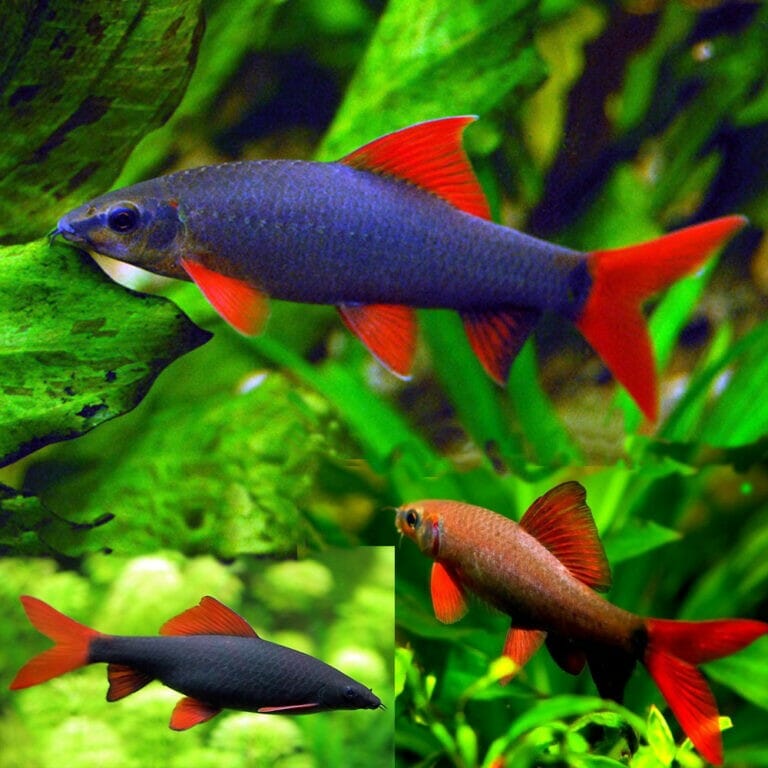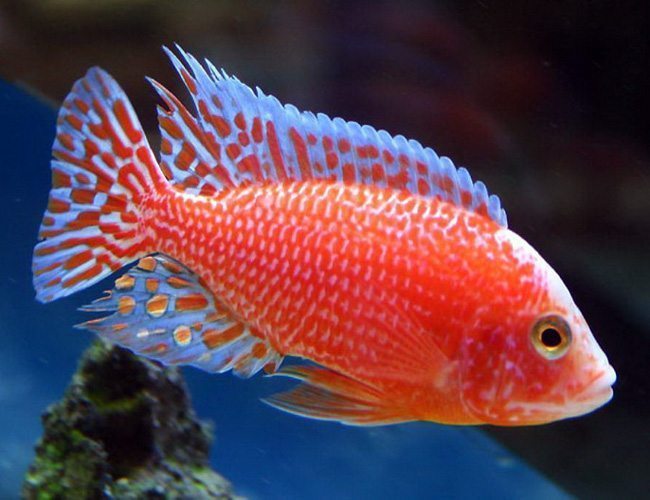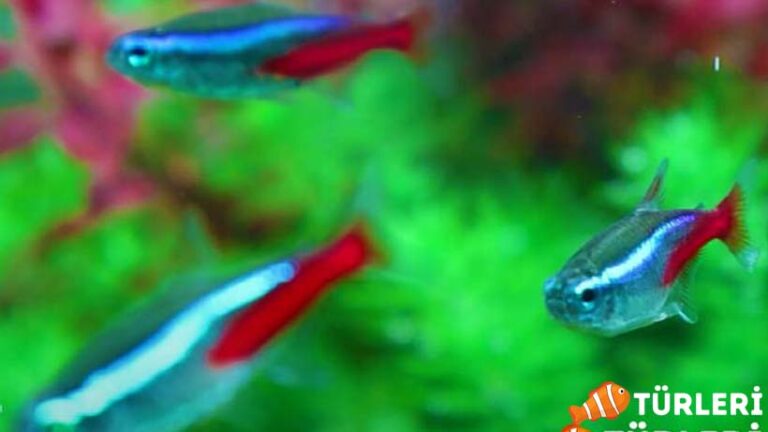Moscow Blue Guppy Introduction
The Moscow Blue Guppy (Poecilia reticulata var.) is a special guppy breed that you’d want to see in your aquarium, known for its beautiful colors and peaceful temperament. In this article, we’ve explored the Moscow Blue Guppy in all its aspects.
If you’re looking for a guppy breed that’s easy to care for and has a stunning appearance, this might be the fish for you. Continue reading to learn all the details about the Moscow Blue Guppy.
Moscow Blue Guppy Breed Summary
| Other Names: | Moscow Blue Guppy, Moscow Dark Blue Guppy, Moscow Blue Guppy |
| Scientific Name: | Poecilia reticulata var |
| Origin: | South America |
| Diet: | Omnivore |
| Behavior: | Peaceful |
| Behavior Towards Its Own Species: | Peaceful |
| Swimming Zone: | Middle and Surface |
| Water Temperature: | 20°C – 28 °C |
| Water Hardness: | 7 – 19 °dH |
| pH Level: | 6.5- 8.5 |
| Minimum Aquarium Volume: | 40 Liters |
| Adult Size: | Males 6cm, females are larger |
| Breeding: | Live-bearing |
| Life Span: | 2 – 3 years |
| Care: | Easy |
Characteristics
Guppies are among the first choices for beginners in freshwater aquariums, being resilient and prolific tropical fish. Moscow Blue Guppy, as with other guppy breeds, especially the males, has fantastic colors.
These characteristics are enough to place them among special guppy breeds. While the origin of guppies is South America, this breed is not found in natural environments. It has been artificially bred by experienced hobbyists.
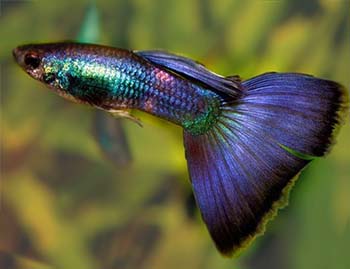
The most distinctive physical features that differentiate Moscow Blue Guppy and its variants from others are their unique colors, being larger than regular guppies, and the bright, metallic areas around their heads.
Although it’s not certain, the breeding of this species was first done in Russia in the 1980s. Later, in a competition held in America in 1998, it announced its name to the whole world by ranking third.
Despite being a single color, they have a very deep and special shade. It is these characteristics that make them stand out among special guppy breeds.
In addition to the Blue Moscow Guppy, other popular variants can be listed as follows:
- Red Moscow Guppy (Red Moscow Guppy): This variant is the most challenging to produce. From time to time, you may see this species not exactly in red but in orange shades.
- Black Moscow Guppy (Black Moscow Guppy): Guppies, known for their colorful species, have also proven their beauty in black. To understand whether it’s a Moscow breed, one can look at the dark gray, blue, and brown areas in their abdominal regions.
- Purple Moscow Guppy (Purple Moscow Guppy): Just like in red, producing purebred purple moscow is quite challenging. They emerge from the mating of red and blue Moscow. Moreover, Purple Moscow has also managed to be the most sought-after Moscow breed.
- Green Moscow Guppy (Green Moscow Guppy): With its metallic, turquoise-tinted green colors, it’s my favorite type. Although every variant has metallic colors, the Green Moscow undoubtedly showcases it best.
- Moscow Dark Blue Guppy: This breed is almost the same. As the name suggests, it has dark black-blue tail and abdominal colors, especially more noticeable in females.
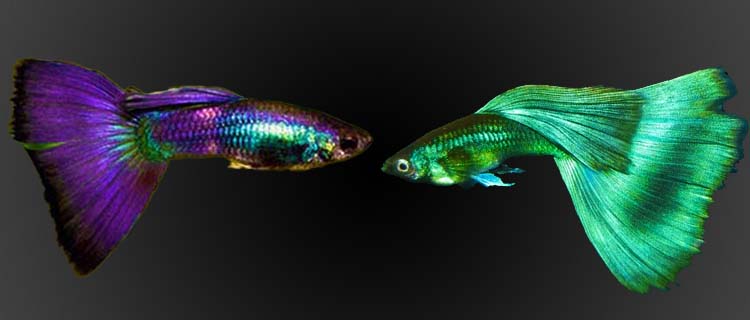
Sexual Dimorphism
It’s quite challenging to determine the sex of the fish when they are young, and you might not make a correct distinction. Determining the sex of adult blue Moscow guppies is not very different from regular species.
As guppies grow, it will become much easier for you to understand the difference between their genders. The Moscow blue female is noticeably larger compared to the males. Additionally, the abdominal area of the female appears larger than the males. Males, on the other hand, are smaller compared to females and their colors are much more vivid.
Additionally, you can also determine their sex by looking at their anal fins. The anal fin of males is more pointed and large, whereas in females, it’s smaller and resembles a square shape.

Care
Guppies are among the species that are easy to care for. However, you should pay more attention to special breeds than regular ones.
Feeding and Food
The Blue Moscow Guppy is an omnivore (both carnivore and herbivore). Therefore, you can use both protein or plant-based feeds together.
They can be fed with ready flake foods, frozen, and fresh live foods. To maintain the health, beautiful colors, and form of your fish, it’s essential to use high-quality and diverse foods.
For the fish’s health, it’s best to feed them with plant-based flake foods, blood worms, and brine shrimps that have high nutritional value.
To protect and treat your fish against diseases, check out: Aquarium Fish Diseases.
Aquarium Requirements
An aquarium with a capacity of 40 liters is sufficient for a few fish. However, if you want them to reproduce and multiply, the aquarium volume should be much larger.
While 40 liters is sufficient for 3-4 guppies, you definitely need to increase the volume for more. These fish are happier and healthier in planted aquariums. If possible, you can add a few types of plants to your aquarium.
Compatible Tank Mates
Special breed fish should not be kept with other guppy variants. Otherwise, special breeds and regular breeds will interbreed, resulting in mixed breeds.
Apart from guppies, some species you can add are:
- Swordtail Fish
- Platy Fish
- Molly Fish
- Corydoras Catfish
- Gourami Fish
- Rasbora
- Tetra
Breeding Moscow Blue Guppies
The ideal male to female ratio for breeding is 1 to 3. This ensures that the females aren’t overly bothered and the fry production is better. Additionally, you can breed them by keeping males and females in separate aquariums.
By putting your selected pair in the same aquarium, you can facilitate the male to get the female ready for breeding. By repeating this process, you can achieve productive breeding.
To prevent adults from eating the fry, it’s recommended to remove them from the aquarium after birth.
To establish a pure breed, you can breed the two best fry from the new generation. By doing this for several generations, you’ll eventually achieve a fantastic, pure Moscow blue breed (ensure that the fish you get are not mixed breeds).
Birth
Moscow Blue Guppies are livebearers. This means that as soon as they give birth, the fry starts swimming freely. In about 4-5 weeks, they reach around 1 cm, and after this period, they become less sensitive.
To feed the fry, you can use flake foods and Artemia. Artemia is a very effective type of feed for the fry. You can provide this in addition to their regular feed once a day.
Kaynaklar: https://aquaticarts.com/, https://modestfish.com

